A traveller’s view of the aurora from their flight landing into Christchurch at midnight on 12 May, 2024.
Photo: Supplied / James Hustler
Material fired out from a sun spot is crashing into the planet’s atmosphere this weekend and causing the skies of New Zealand to light up.
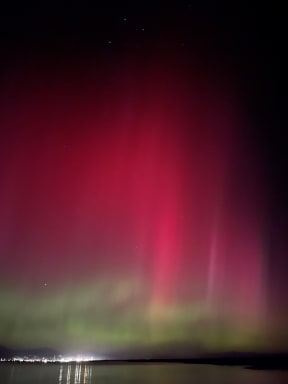
A view of the aurora from Nelson on 11 May, 2024.
Photo: Supplied / Rachael Ennor
A giant spot on the sun, which is 17 times the diameter of our planet, is throwing material into the atmosphere.
The storm has been creating vivid colourful skies around the world, including in New Zealand.
Overnight, many people observed and took pictures of an often purple colour aurora in the night sky.
The last time there was such a strong storm was in 2003.
Read more:
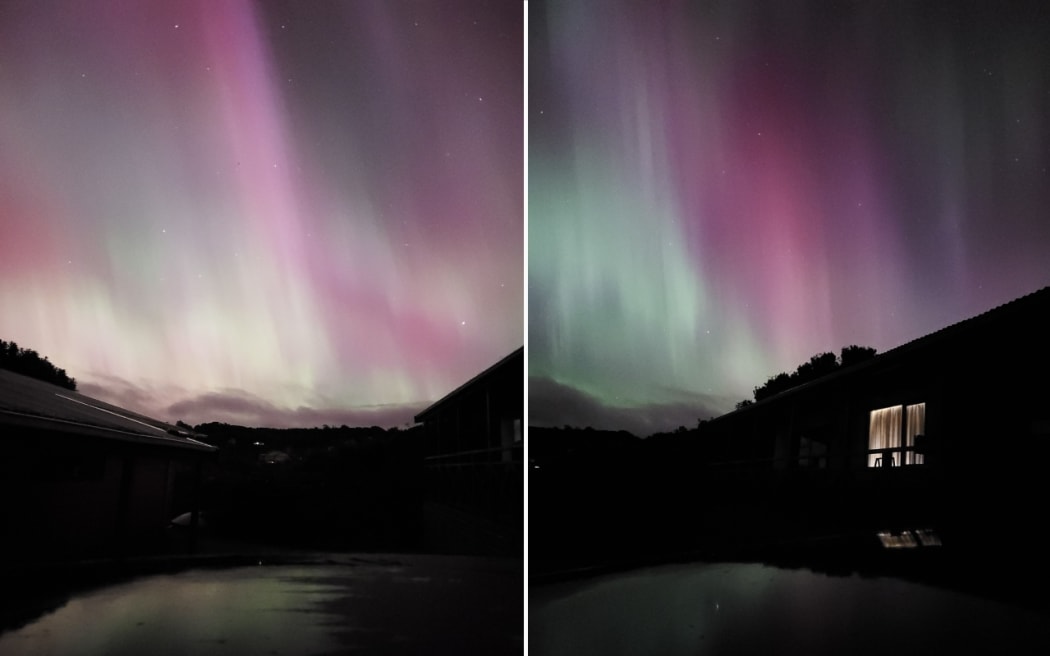
The aurora seen from Stewart Island on 11 May, 2024.
Photo: Supplied / Twinkle Dark Sky Tours
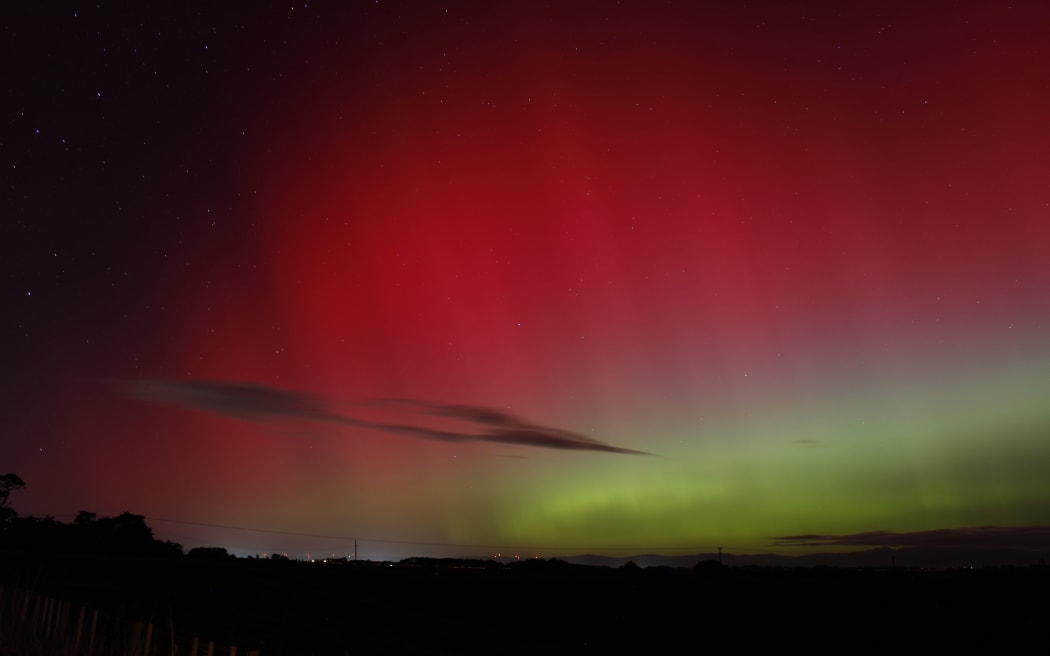
The aurora seen from near Ohakea, Manawatū, on 11 May, 2024.
Photo: Supplied / Shaun Stockley
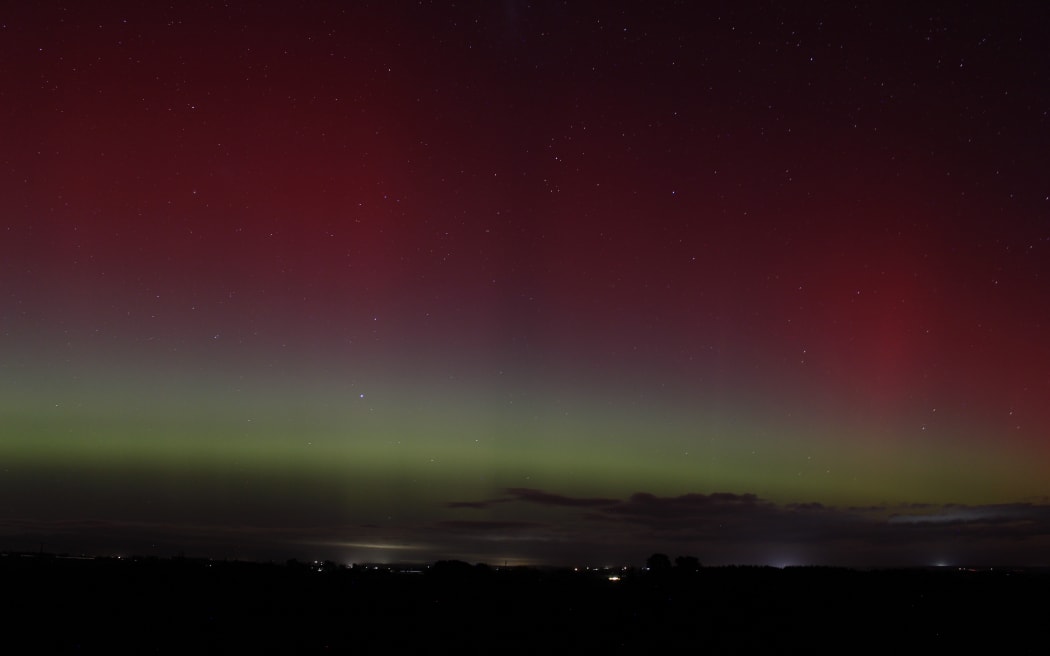
The aurora seen from near Ohakea, Manawatū, on 11 May, 2024.
Photo: Supplied / Shaun Stockley
MetService said most of the country had good visibility and it has received many photos of purple and crimson skies, reflecting the spectacular solar storm.
But many people wanting to see it in places including Wellington, Marlborough and the Deep South were thwarted by cloudy conditions.
Kem Johnson from Mount Somers, about 50 kilometres west of Christchurch, said the aurora there was bright white.
“It wasn’t a colourful aurora but it was a white one that seemed to have large rays shooting across the sky, it was bright as.”
The skies were clear in west Canterbury and the aurora washed out the skies, Johnson said.
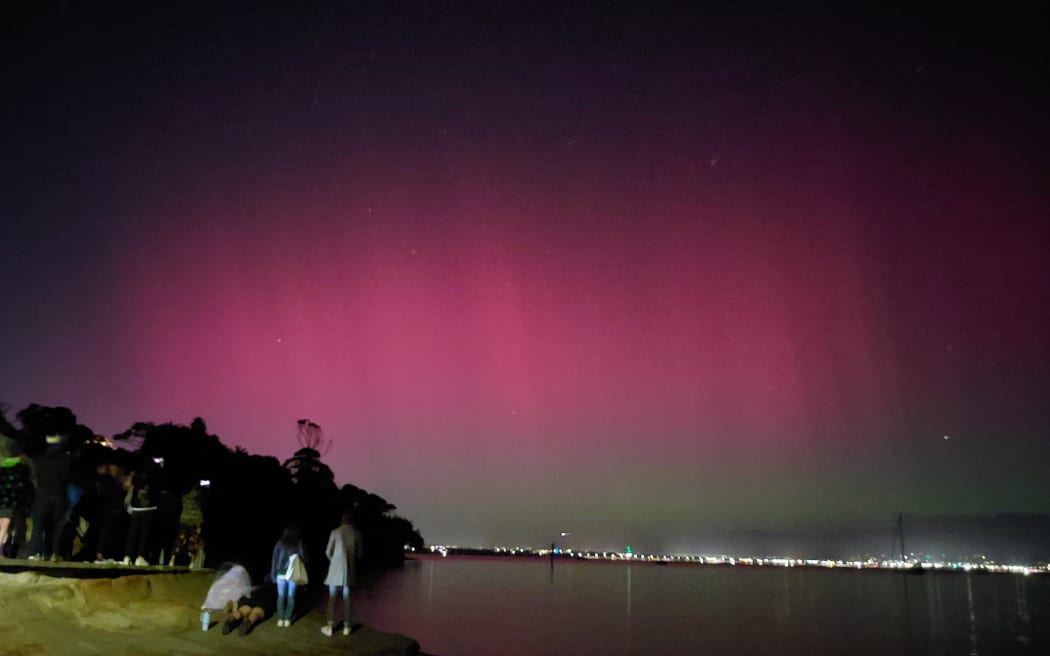
The aurora seen from Island Bay in Beach Haven, Auckland, on 11 May, 2024.
Photo: Supplied / Genevieve Lee
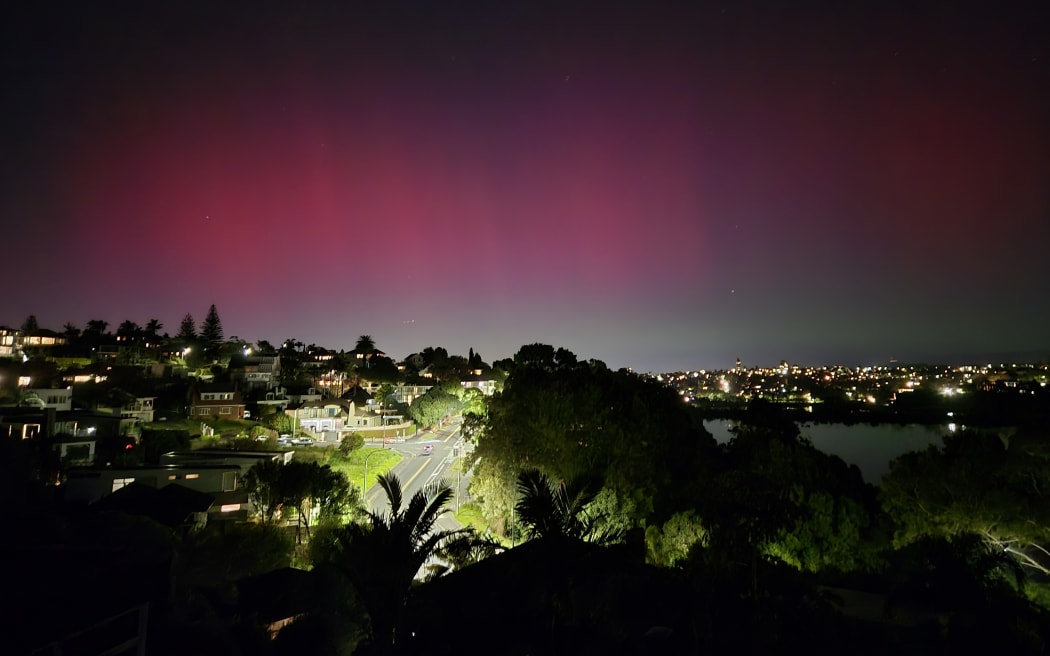
Aurora over Ōrākei, Auckland.
Photo: Supplied / Jack Matthews
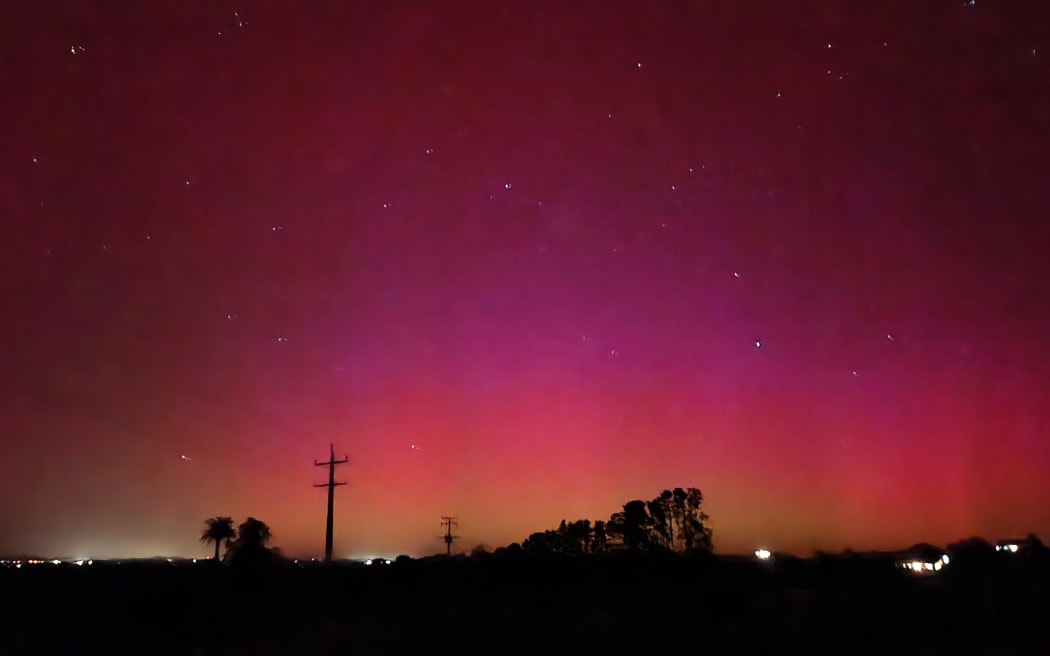
Mercer, south of Auckland.
Photo: Supplied / Laura Acket
Dunedin resident Lesley said she was prepared for the aurora display thanks to Otago University’s aurora app, which was showing an eight out of nine chance of visibility at 6.30pm on Saturday.
“Being able to see auroras with the naked eye, and so eight of nine and then it went to nine out of nine later in the evening, so it’s never going to get any better than that.”
She headed to St Kilda beach where she said there were more than 100 people.
Astronomer Ian Griffin, from Otago Museum, said New Zealand had been the first to get a front row seat.
“What’s happening is material from the sun is crossing space and interacting with Earth’s magnetic field and generating electric currents all over the place, that’s potentially doing things like interfering with the power grid and also causing amazing aurora, obviously for folks like myself who like watching the aurora, it’s a very exciting time.”
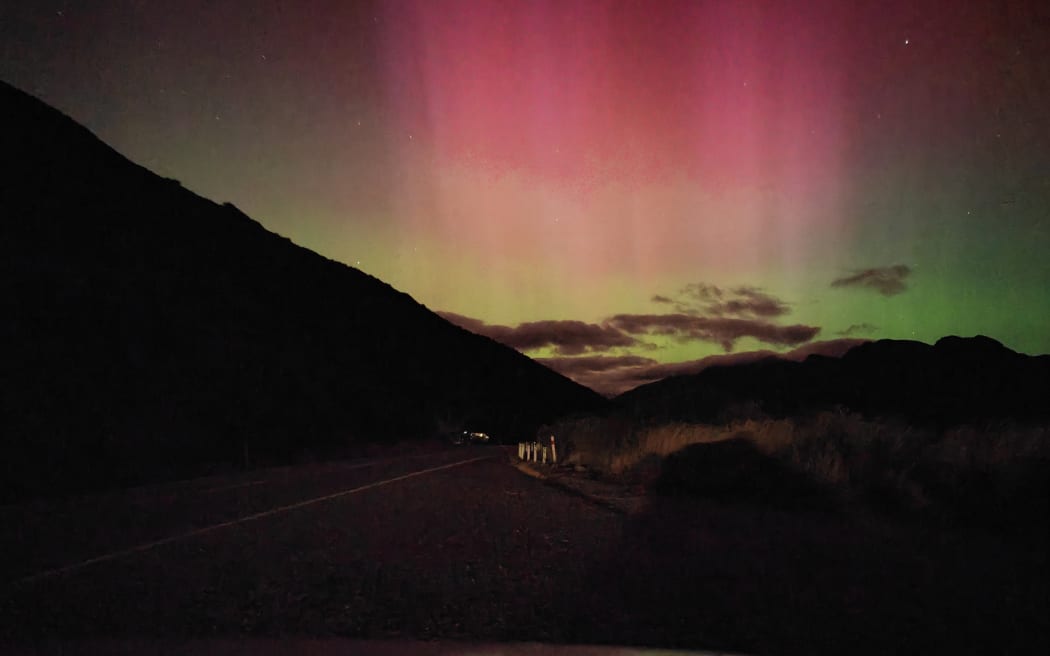
Near Queenstown.
Photo: Supplied / Emmilee Fendall Leech
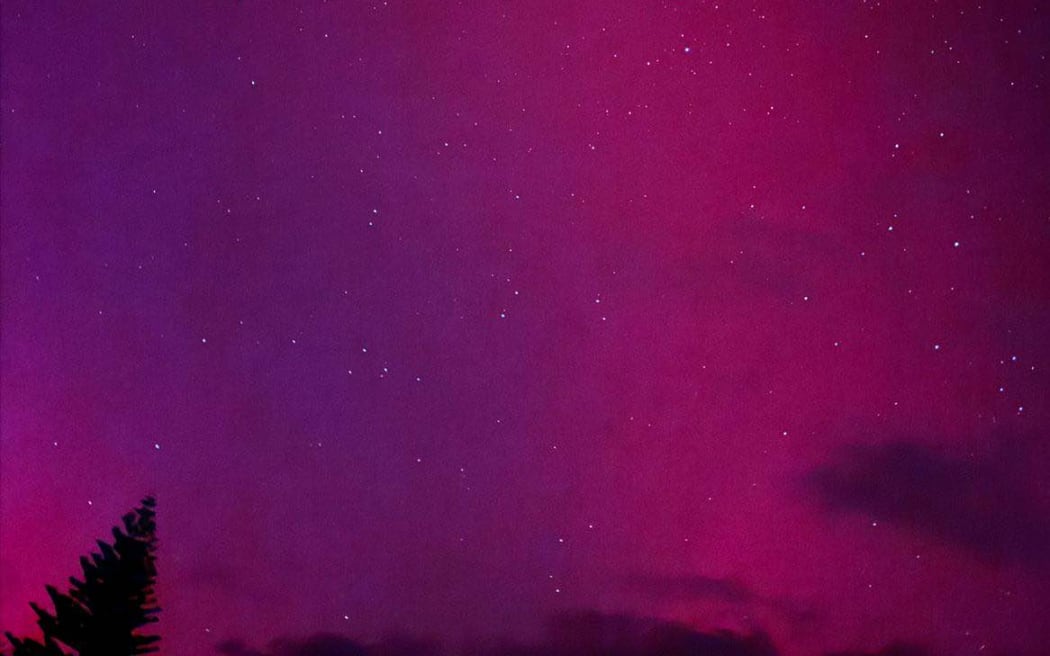
Stunning sky as seen from Port Waikato.
Photo: Supplied / Rebekah McIntyre
The US National Oceanic and Atmospheric Administration said the powerful solar storm was likely to continue the rest of the weekend.
It said the storm might pose risks to navigation systems, power grids, and satellite navigation, among other services.
On Saturday, New Zealand national grid operator Transpower shut down some power circuits as a precaution.
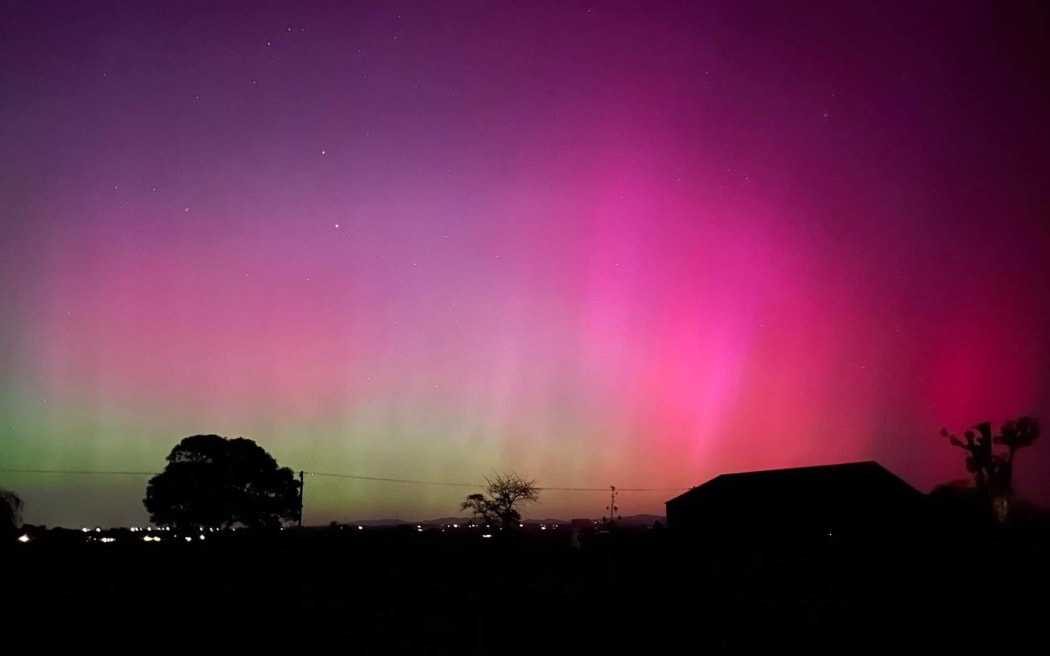
The aurora near Timaru Airport, South Canterbury.
Photo: Supplied / Alana Fitzgerald
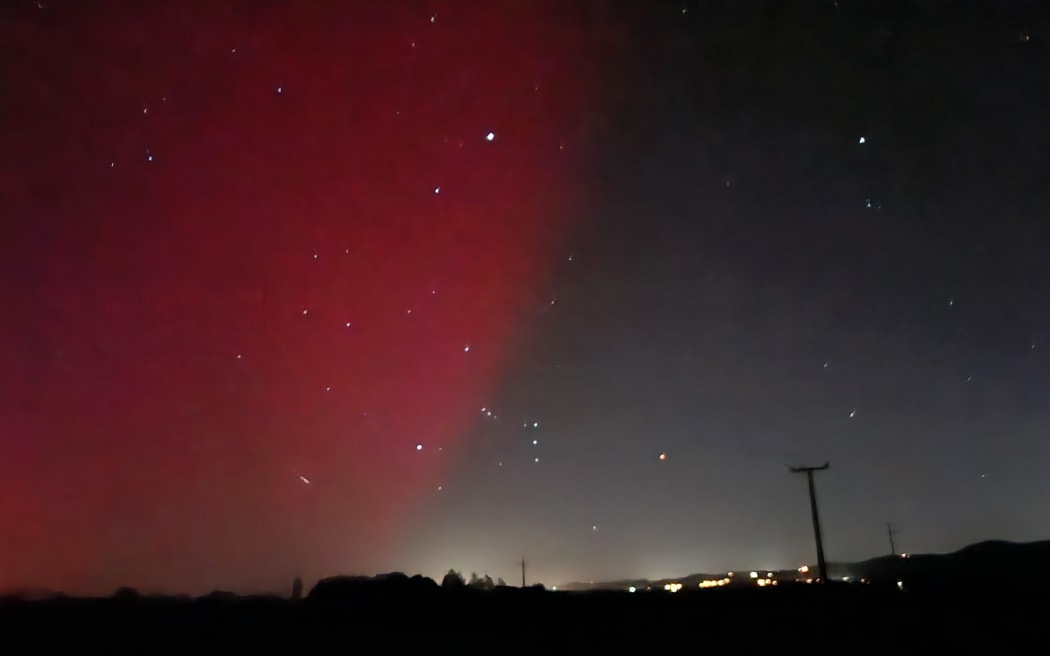
The sky in Mercer.
Photo: Supplied / Laura Acket
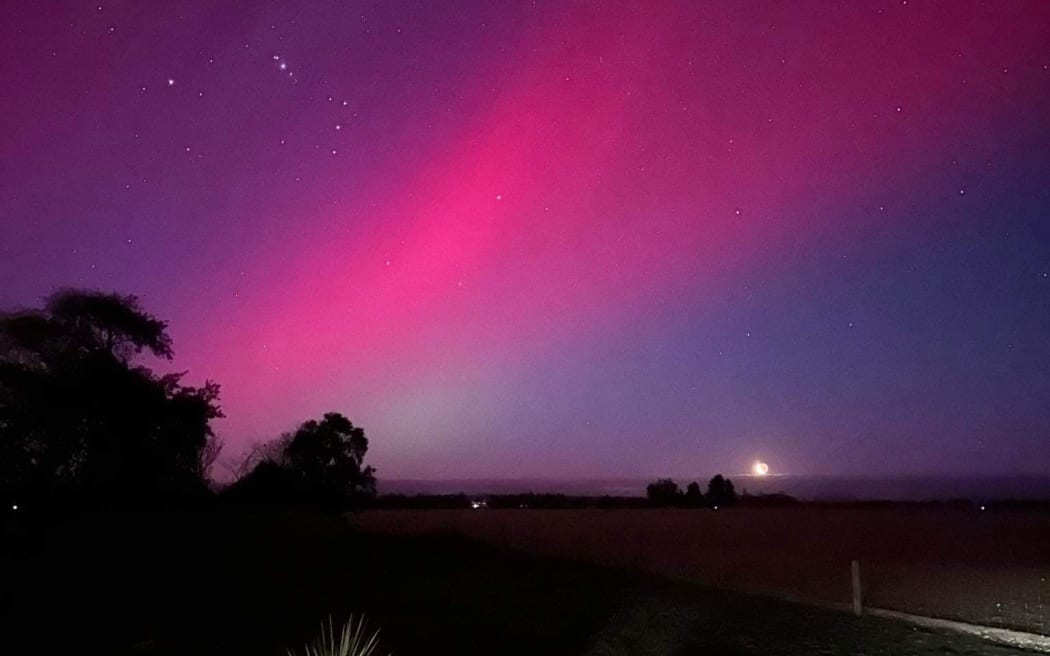
South Canterbury, near Timaru airport.
Photo: Supplied / Alana Fitzgerald
Otago University physics professor Craig Rodger believes the Earth could experience more solar storms in the coming weeks.
While this storm was nothing to worry about, there could be more to come, as the sun would remain in its active period for a year, Rodger said.
“The sun is moving into its period, it’s called solar maximum which is when it’s at its most restless and most explosive on the sun and so something big could well happen in the next few weeks, probably it will be a bit smaller than this.”
The sun will be in its ‘active period’ for the next year.
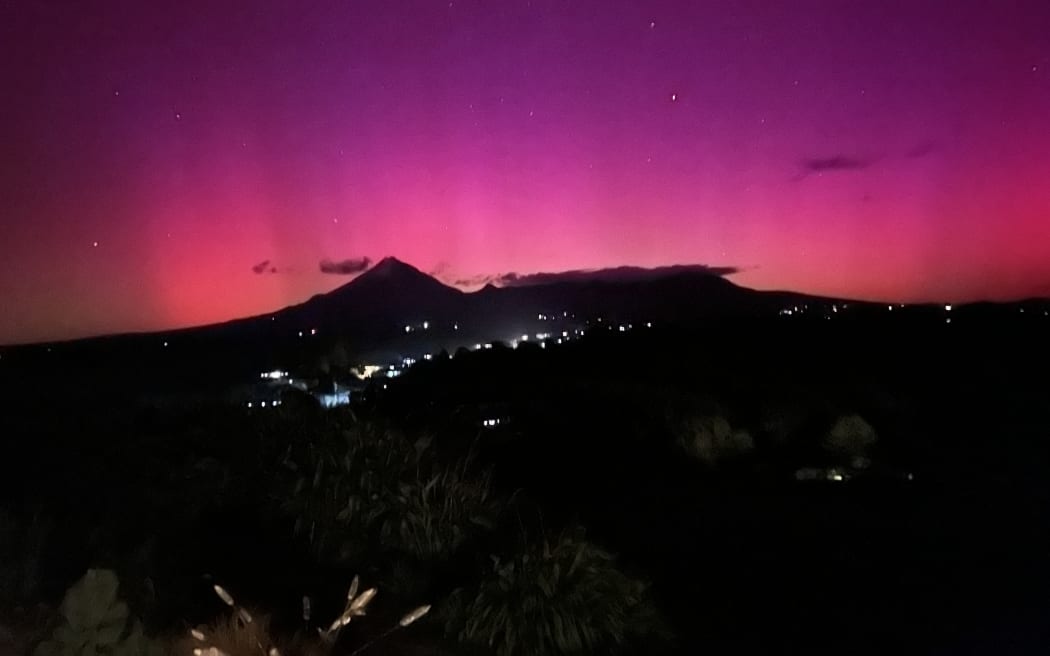
Pink skies over Taranaki.
Photo: Supplied / Nicola King
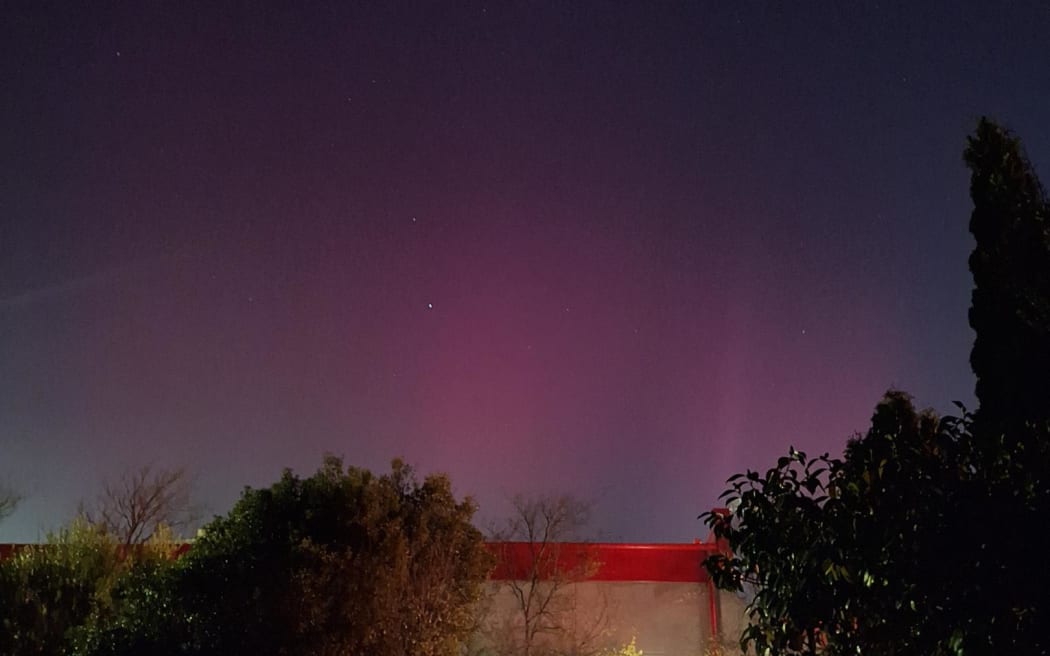
The aurora over Eastgate mall, Christchurch.
Photo: RNZ / Georgie Hanafin
Rodger said this storm was not as big as those experienced in 2001 and 2003.
“We have been working with the New Zealand electricity industry in our solar tsunamis research project to look at what would happen if there was an extreme storm for New Zealand, something that was more like one in 100 years, and the conclusion is that is something we need to prepare and be concerned about, this event is something like 50 times smaller than those extreme storms.”
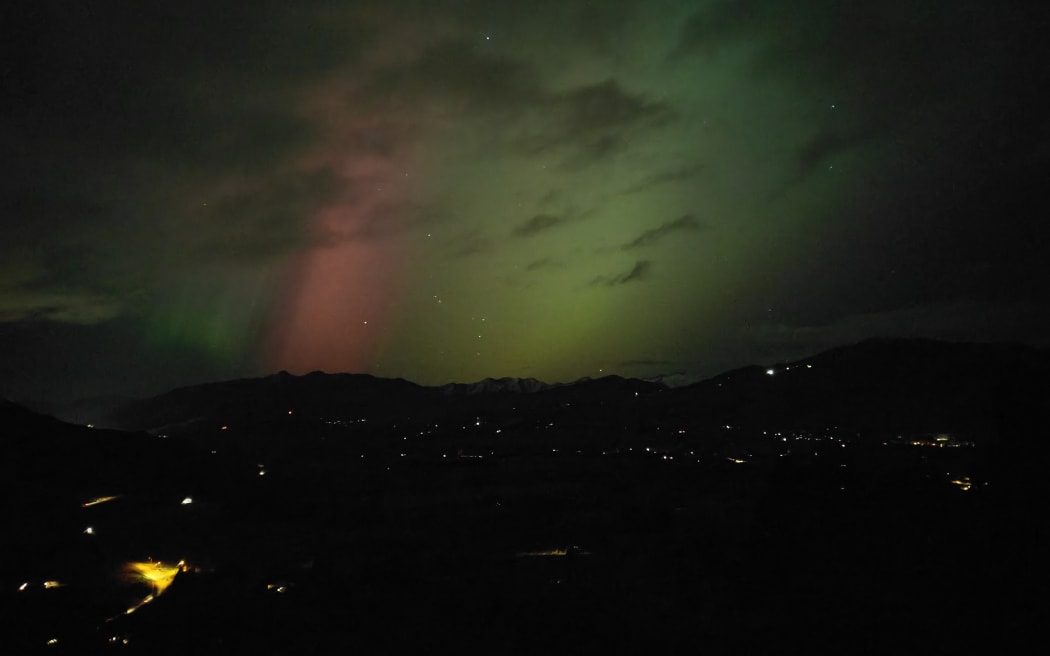
Near Queenstown.
Photo: Supplied / Emmilee Fendall Leech
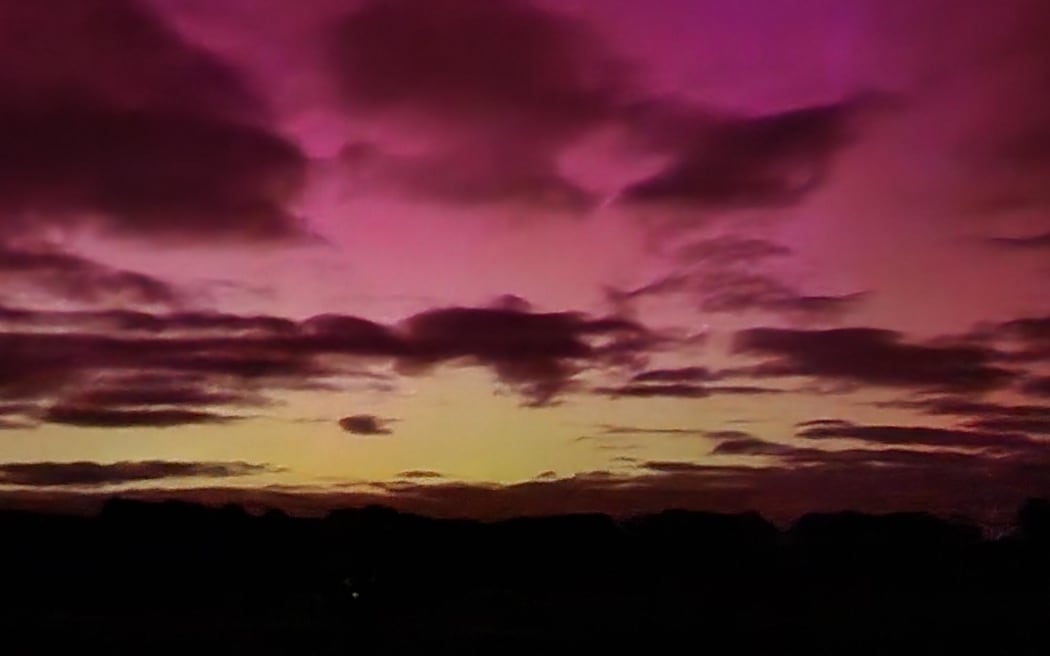
The sky near Martinborough.
Photo: RNZ / John Gerritsen
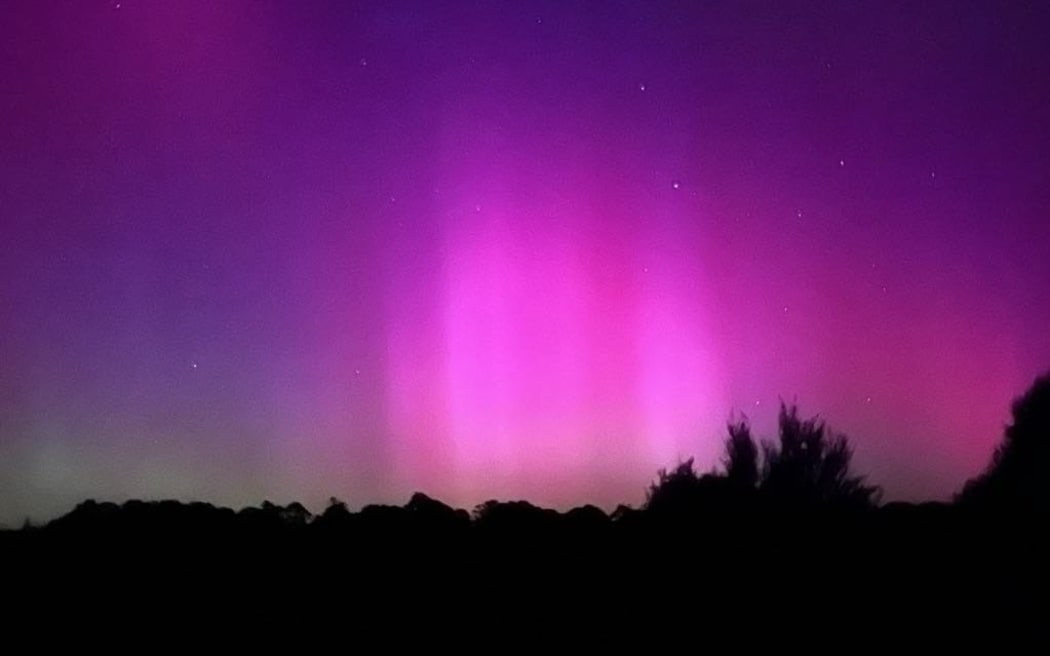
Near Horopito.
Photo: Supplied/ Rick Chapman
Astrophysicis Jan Eldridge, from Auckland University, said a solar storm that swept Earth in 1859 could give some clues as to how the current one could play out.
“A similar sized group of sun spots actually blew out the old telegraph poles and we’ve got so much more communication technology 1715471163, over 9000 satellites in orbit, and so if something that powerful that this is not quite approaching that, but it could do, it could be a significant impact on technology and communication.”
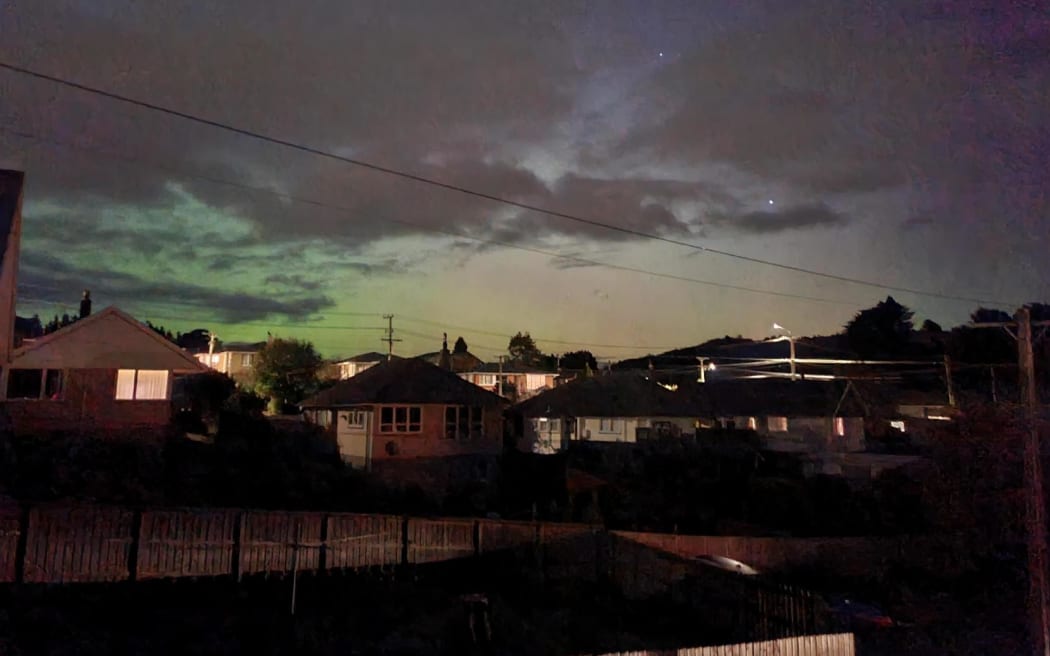
The sky over Dunedin.
Photo: RNZ / Tess Brunton
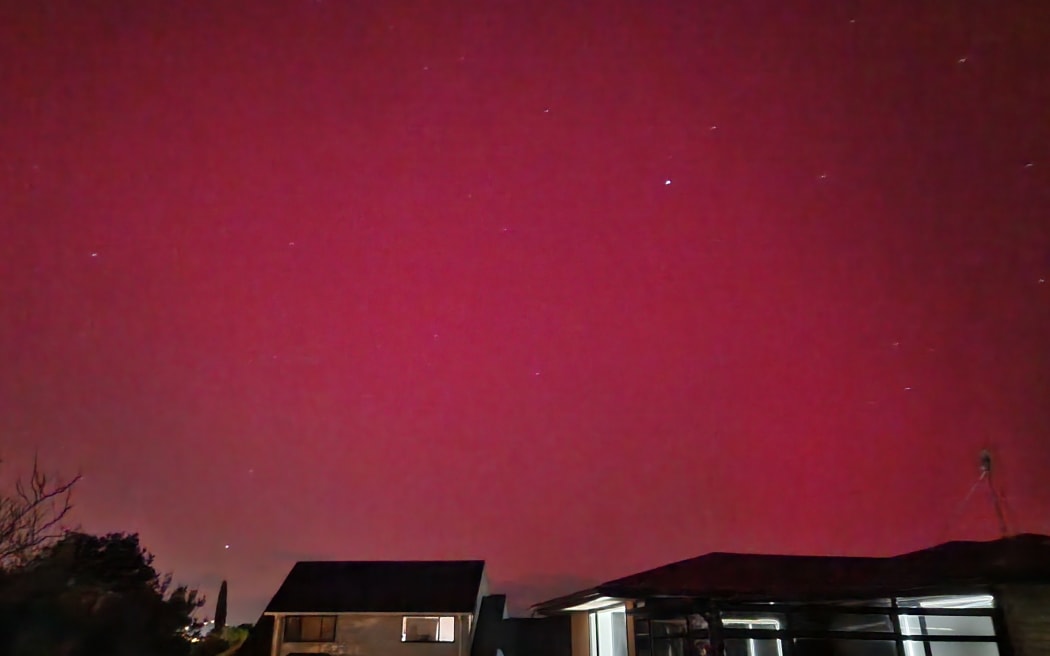
The sky in Glendene, west Auckland.
Photo: RNZ / Kymberlee Gomes
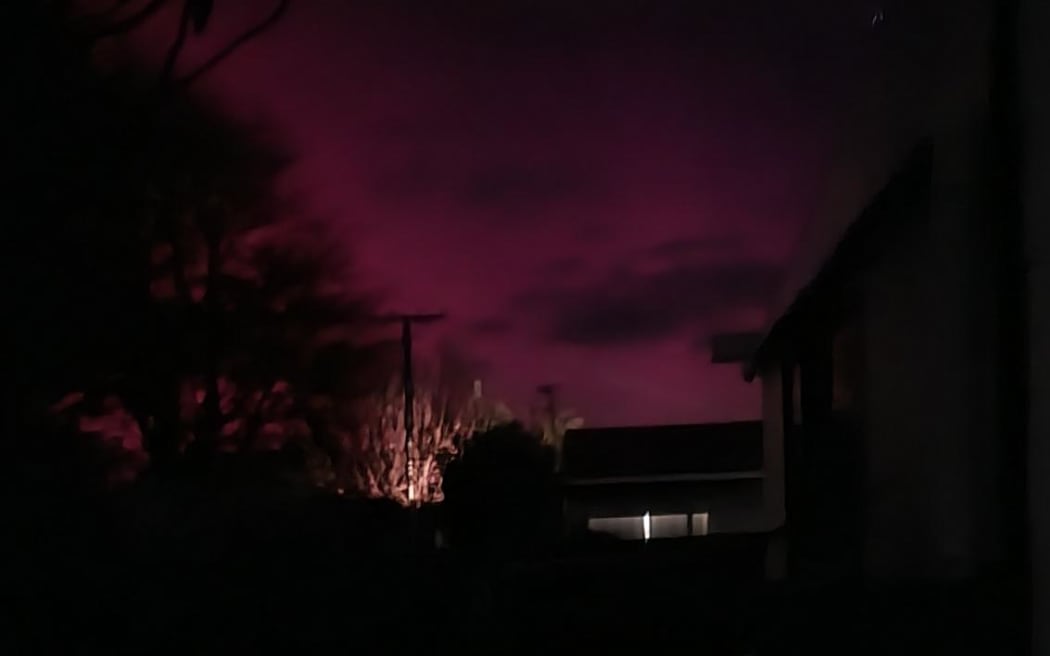
Pink sky in New Plymouth.
Photo: RNZ / Robin Martin

Aurora lights in Cambridge, Waikato.
Photo: RNZ / Libby Kirkby-McLeod
So far, no problems have been reported and emergency management officials have been briefed.
Starlink, the satellite arm of Elon Musk’s SpaceX, also warned of a degraded service.
It owns about 60 percent of the satellites orbiting Earth and is a dominant player in satellite internet.
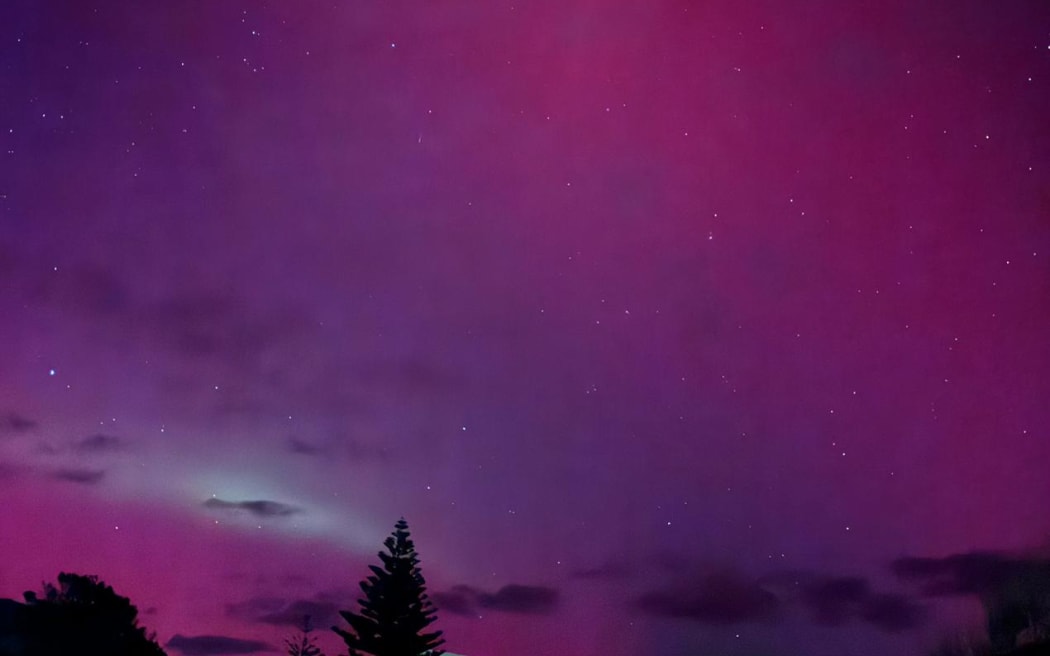
Stunning sky as seen from Port Waikato.
Photo: Supplied / Rebekah McIntyre





















Discussion about this post